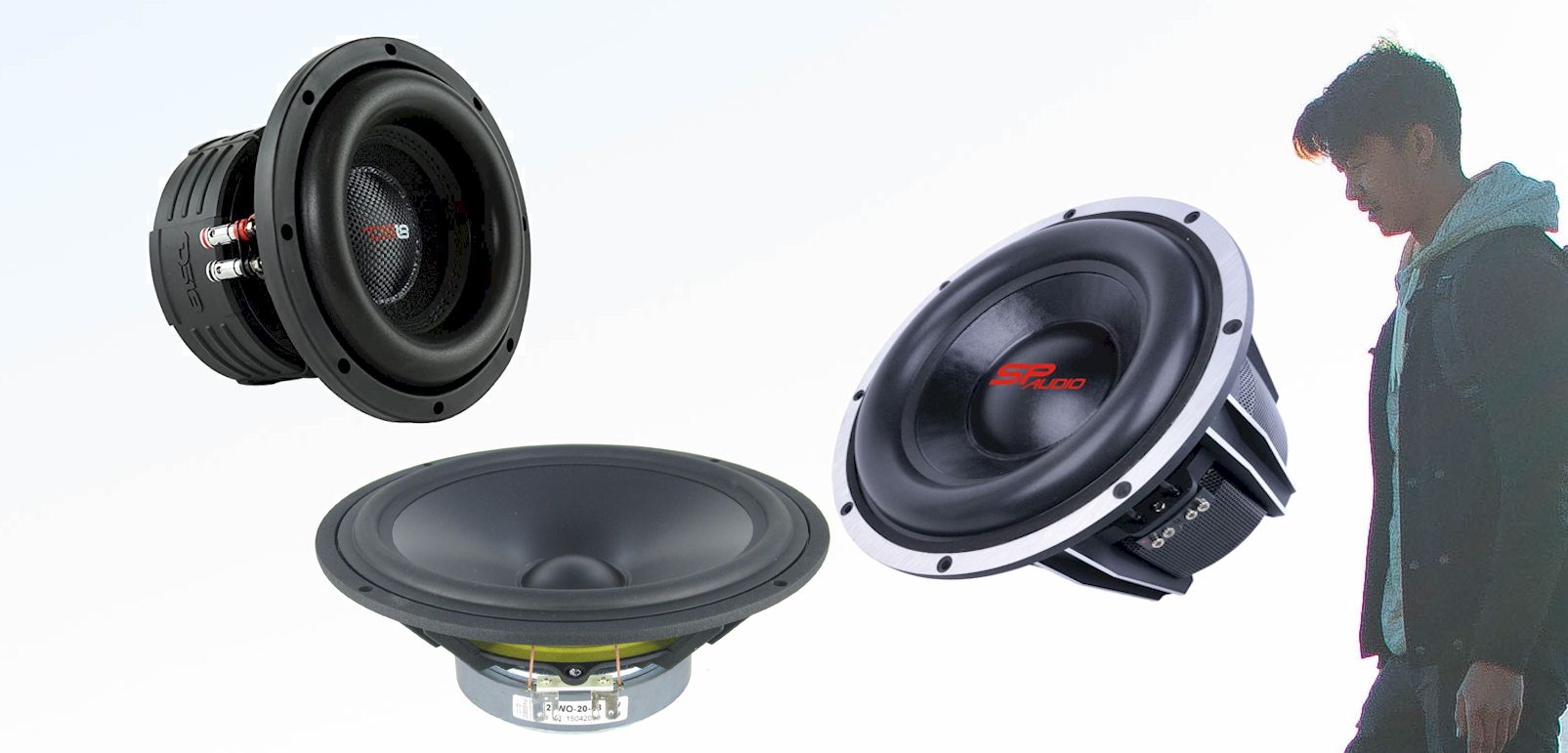Did you know that woofer and subwoofer are two different audio gears? Many people out there consider them to be the same thing, while in reality, they have quite a few differences between them.
Here, I will unveil all the differences between subwoofer vs woofer and give you a little insight into both of them. It’s essential to know about the differences in choosing one for your preferred needs because they both have particular benefits and usage.
So, without wasting further time, let’s get started with it.
Contents
What is a woofer?
The woofer is a type of speaker that specializes in producing the lower end of the audio spectrum. It's usually the sounds that have lower frequencies than usual. Imagine a dog barking and going “Woof.” That’s where the word woofer comes from.
The usual frequency range of a woofer starts from 40Hz and goes up to 2500Hz. So, these are mostly low to mid frequencies coming from any audio file. Usually, car audio uses the woofer to get the bass because of its compact size.
What is a subwoofer?
A subwoofer is a type of woofer that can reach lower frequencies than a typical woofer. Using a subwoofer, you get to hear the pure bass sounds from any audio file you are listening to. They can give you that deep rumbling bass that you wish to get from your music.
Even though the frequency range starts from lower, it doesn’t range much. The frequency of a subwoofer starts from 20Hz and goes up to 250Hz at max. So, they are solely based on getting the bass out of any audio you can find out there.
Related: how to test the subwoofer
Subwoofer vs. Woofer, all the differences among them
Now, let's dive deep into the differences between both woofers and subwoofers. There are quite a lot of differences to go through. So, I have broken them down into several factors that will make it easier for you to understand how they are different from each other. Let’s get going.
Frequency range
As you can already tell from the above information, there is a difference between the frequency range of woofers and subwoofers. While woofers produce frequencies from 40Hz to 2500Hz, subwoofers only produce 20Hz to 250Hz. This means subwoofers can have the lowest frequencies audible to human ears.
Because of this frequency range, you will hear two different sound qualities from both these loudspeakers. With a subwoofer, you will get to hear more deep and heavy sounds. And with a woofer, you get a lighter sound quality than a subwoofer, but you still get the bass you desire from your sounds. Although it’s not a deep rumbly bass like a subwoofer can give.
Related: SVS SB 3000 review
Drivers
There is a lot to discuss when it comes to drivers of subwoofers and woofers. First, let's get through the number of drivers each of them has.
Numbers of drivers
In a woofer, you will come across a variety of driver setups. While most of them come with a 3-way driver system, some also come with 2- and 4-way driver systems. In the typical 3-way driver system, you get a woofer, a mid-driver, and a tweeter.
On the other hand, a subwoofer comes with only one driver. There are no multiple driver subwoofer systems out there. However, there is an option to get a bigger subwoofer with multiple subwoofers installed inside; that's a different thing, though.
The power source of drivers
Now, let’s talk about the power sources of the drivers. There are only two ways to power the drivers of a speaker. It either has to be active or passive. A dynamic power source means it has got a built-in amplifier to produce sounds by itself. A passive power source means you will need an external amplifier to power up the drivers.
Usually, woofers can only be powered by passive drivers. This means you will need to use the amplifier that you use for powering up speakers. Just connect the woofer to your amplifier, and it should work.
When it comes to a subwoofer, you can have a passive power source or an active power source. What this means is that some subwoofers come with an inbuilt amplifier that comes with some handy features. On the other hand, the passive subwoofers are pretty similar to woofers in terms of this functionality.
Related: SVS sb1000 vs pb1000, Subwoofer Comparative Reviews
Size
There is a significant difference between the size of woofers and subwoofers. Usually, subwoofers are much larger units than woofers because the subwoofer needs a larger dimension to produce the lower frequencies that a woofer can't produce.
You will still find some large woofers, but they won’t be as big as subwoofers because woofers don’t need to produce that lower end of the audio spectrum. This is why most car audio systems will have a woofer rather than a subwoofer.
Power consumption
In terms of power consumption, there is a noticeable difference between woofers and subwoofers. Subwoofers tend to require more power because they have to produce those lower frequencies. Making the lower frequencies needs a lot of energy from the amplifier; hence subwoofers require more power.
On the other hand, woofers don’t require as much power as the subwoofer. Even the best of the best woofer won’t require too much power. This is why car audio woofers work better as it doesn’t draw too much power from the amplifier.
As you can see, there are lots of differences between a woofer and a subwoofer. And honestly, many people aren't aware of these differences to date as they still think woofer and subwoofer are the same things. Now, which one you choose between these two is up to you.
Related: Ported vs Sealed Subwoofer
Wrap up
In short, knowing the differences between subwoofer vs woofer is very important because that will impact your decision to buy one significantly. Now, how you should choose one will boil down to what you need.
If you are looking for the deep rumble in the bass, then the subwoofer is the choice. But if you want to save up on power, then you should go for a woofer. With the help of the comparison I did above, you can quickly figure out which one suits your need more.

HI, John Andrew here. I’ve been an audiophile since I was a little kid. I’m an original member of myaudiolover . It emerged as a way for me to share my passion and knowledge for audio technology. If you’re looking for tips, techniques, and insights about audio-tech, that can enable your productions that professional edge, then MyAudioLover is the place for you!

